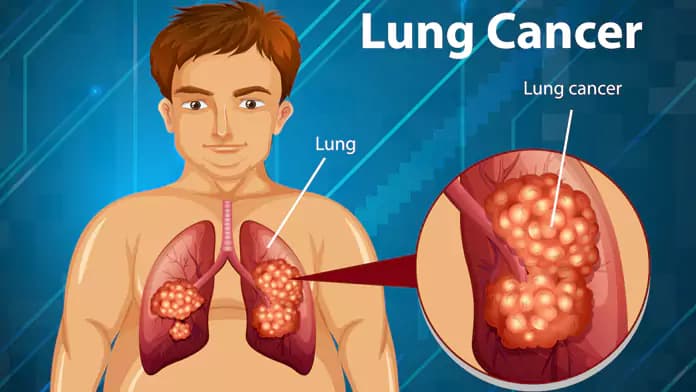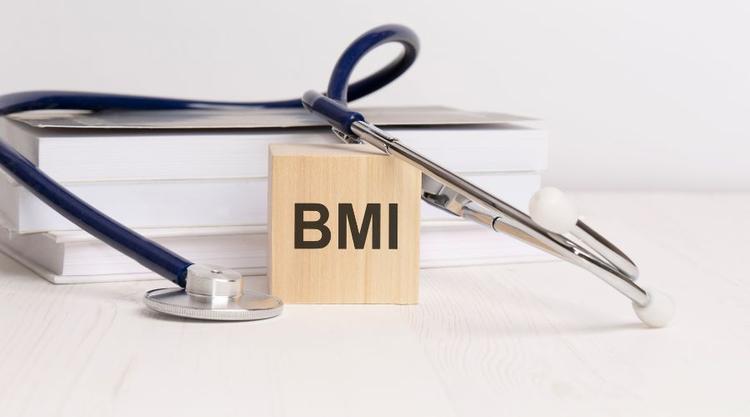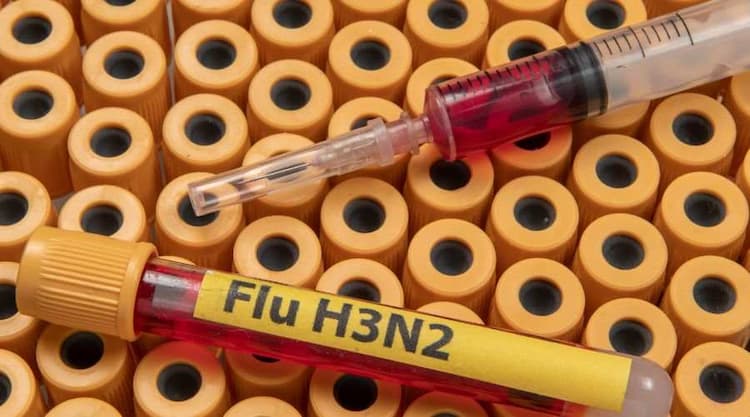Lung Cancer Awareness Month 2022

Medically Reviewed By
Dr. Ragiinii Sharma
Written By Prekshi Garg
on Nov 7, 2022
Last Edit Made By Prekshi Garg
on Mar 6, 2024

Lung cancer is one of the most common types of cancer diagnosed in both men and women. Every year people collectively die more with this type of cancer than any other type of cancer, like colon, breast, and prostate cancers. Lung cancer awareness month 2022 is November, and the campaign's main aim is to encourage people to know and understand all about lung cancer, the second most common cancer. During this month, people all over the country and the world come together for the people who are suffering from the disease by raising donations, spreading awareness, and doing other activities. Many events are organized, articles are written, and Facebook statuses are updated, with the single aim of creating awareness about the disease. There are also many videos that are created and spread online to help people to know all about the most common sub-type of lung cancer, ie., small cell carcinoma.
History of lung cancer awareness month
Lung cancer awareness month is the best time to share the stories of cancer survivors with the people battling cancer as well as to create sensitization among the common public. With these stories of hope and strength, the organization's main objective is to increase the knowledge about both small cell lung cancer and non-small scale lung cancer, their causes and symptoms, and the need to get treated early. Lung cancer cases have been recorded since 3000 B.C. in Egypt, and it was believed that it was caused by god. Then in 460-370 BC, Hippocrates named tumors as carcinos and carcinoma. After that, in the 16th century, lung cancer was recognized as a disease as its characteristics were identified in 1810. At that time, it was the rarest disease that was often spotted in miners, and then from 1876 to 1938, about 60 to 80 percent of miners died from small cell carcinoma. Til 1878, the disease was still rare, but the percentage increased in 1918 and much more rosed in 1927. The main culprit for this was smoking which has paced up over the years and started showing adverse effects on the human body and was not yet detected. It was in 1929 when German scientist Fritz Lickint highlighted the connection between smoking and lung cancer. It led to the anti-tobacco movement in Germany, which then spread to many other parts of the world. In 1930 the world noticed an increment in cancer cases, and researchers started finding the effect of smoking and tobacco use on lung cancer. Lung cancer awareness month was started in 1995 as lung cancer awareness day because of the growth of the lung cancer community and the movement to make people aware of the disease. During this month, people throughout the country come together to support the community and raise awareness about lung cancer.
Lung cancer and its types
Lung cancer is one of the cancer types that begins in the lungs and is considered as the leading cause of cancer deaths worldwide. It is a disease that starts in the lungs and spreads to lymph nodes or to any other organs, including the brain. Three lung cancer types are listed for you to give you more clear understanding:
Small cell lung cancer
Small cell lung cancer is also of two types, i.e., small cell carcinoma and mixed small cell / large cell cancer. The small cell lung cancer is divided on `1the basis of the kinds of cells found in it and how they look after observing under a microscope. It is the most common kind of lung cancer, which is almost always linked to cigarette smoking and is typically treated with chemotherapy.
Non-small cell lung cancer
Non-small cell lung cancer is another more common lung cancer, as about 80 percent of cases are of this type. It slowly grows and spreads to many other body organs compared to small-cell lung cancer. It is of three types:
- Adenocarcinoma
It is a form of cancer found in the outer area of the lungs and develops cells of epithelial tissues located in the cavities and surfaces of the body and form glands.
- Squamous cell carcinoma
It is generally found in the center of the lung next to the bronchus.
- Large cell carcinoma
It can be formed in any part of the lung and tends to grow and spread faster than the above two types.
Carcinoid - a rare type of lung cancer
Also known as Bronchial carcinoids, it is one of the rare types of lung cancer and are tumors that are small when diagnosed. It commonly occurs in persons under age 40. It is unrelated to smoking and can metastasize, and a small portion of it secrete hormone-like substances. It is the type of lung cancer that grows and spreads slowly compared to others, and many are detected early so that they can be removed surgically.
November is observed as a lung cancer awareness month. With the rising number of cases, there is a need to encourage a better understanding of the disease. Lung cancer is the most common form of cancer known and a leading cause of death in both men and women. Most lung cancers do not cause any early signs and symptoms until it is spread, but people with early lung cancer experience some symptoms like a cough that gets worse, coughing up blood, chest pain with deep breathing, laughing, etc. It is better to go to your doctor when you first notice the early symptoms, as your cancer will be diagnosed at a starting stage when treatment is most likely to be effective.
Who can get lung cancer?
Lung cancer requires several years to develop, and smoking makes a person more prone to it. Also, people who are more often exposed to cigarette smoke or any other components also end up with permanent abnormal changes in their lungs; these changes can put them at greater risk of developing small-cell lung cancer. Not all know about the disease, and about 30 percent of lung cancer cases are diagnosed in people who have never smoked. Two cases out of three are those who are diagnosed with the disease when they are over 65 years and the most common age to be diagnosed with it is above 70 years.
Symptoms of lung cancer
Most lung cancers do not show any symptoms at an early stage. However, early signs can be something very common like shortness of breath or back pain. Back pain can be a symptom because it can be caused when a tumor causes pressure in your lungs when spread to your spinal cord and ribs. Many other lung cancer early-stage symptoms and signs are:
- Worsening cough
- Coughing blood or phlegm
- Chest pain that can worsen after deep breathing, laughing, or coughing
- Weakness
- Fatigue
- Loss of appetite
- Bronchitis or pneumonia or other respiratory infections
Symptoms of stage 4 lung cancer or advanced stage
Advanced lung cancer symptoms include shortness of breath
- Chest pain
- Unintentional weight loss
- Lumps in the neck or collarbone
- Bone pain
- Headaches
- Balance issues
- Jaundice
- Shoulder pain
- Swelling on the face, upper body
As stated above, lung cancer tumors, in some cases, release a substance similar to hormones, and that can lead to many other symptoms known as paraneoplastic syndrome and including:
- Muscle weakness
- Vomiting
- High B.P.B.P.
- High glucose level
- Seizures
- Confusion
The leading cause of lung cancer and its stages
It is lung cancer awareness month, which is observed to make people understand the causes and prevention of lung cancer. Anybody can get the disease, but about 90 percent of lung cancer cases are because of smoking, which damages the lung tissue from the first minute you inhale it. When it gets damaged, it starts behaving abnormally, and that makes you more prone to lung cancer. As discussed above, small-cell lung cancer is totally linked to smoking. It is advised to stop smoking now as it will help heal your lungs and reduce your chances of lung cancer. Staging lung cancer allows doctors to understand the extent of the person's cancer and finalize the best treatment for them. There are specific terms that are used by doctors to describe the stages:
- Localized is the term doctors use to decide that the cancer is confined to the lungs.
- Regional is the term doctors use to describe cancer that has spread to lymph nodes within the chest.
- Distant is the term used to describe that cancer has spread to many other parts of the body.
Lung cancer diagnosed
Lung cancer diagnosis varies from person to person as doctors do many tests that are based on various factors. These factors are:
- Symptoms
- Medical history
- Physical examination and test results
Doctors can also order aging tests so that they can detect lung cancer, as imaging tests give pictures of the inside body. These help doctors find lung cancer, its extent, and spread and decide the best treatment. This test includes:
- C.T. Scan
- PET Scan
- X rays
- MRIs
- Ultrasound
- Nuclear tests
Lung cancer treatment options
Lung cancer treatment is determined by the doctor and is based on
- Type of lung cancer
- The extent of lung cancer
- Age and medical history of the patient
- Tolerance for specific medications
There are many treatment options for lung cancer, depending on its types and stages. It can be treated with surgery, chemotherapy, radiation therapy, local treatments like laser therapy, etc.
Lung cancer awareness - essential things to prevent it
There is no fixed way to prevent yourself from lung cancer completely, but there are many choices that you can make in your daily routine that can lower your risk of the disease. Lung cancer awareness month 2022 is about making you understand lung cancer and ways to prevent yourself from the same. The best way to prevent yourself from small cell lung cancer is to quit smoking. There are many more ways to reduce your risk to develop lung cancer:
- Quit smoking
It is the best way to prevent lung cancer as it may lower your risk by about 30 to 50 percent compared to people who don't quit it. You have to avoid eating tobacco as it is among the big culprits that develop lung cancer.
- Stay away from secondhand smoke
Secondhand smoke is another significant cause of lung cancer in many cases. It would help if you avoided this secondhand smoke that people exhale when they have cigarettes and cigars. This smoke contains a lot of chemicals and is known to cause.
- Radon gas
Radon is a radioactive gas that cannot be seen or cannot be smelled and is considered the second leading cause of lung cancer. It is a gas released when uranium in rocks and soil breaks down and can enter your home through cracks in the floor, walls, etc. you can test your home from radon and can also get a testing kit for it.
- Family history
It is also another significant factor that makes you more prone to lung cancer. People with a cancer family history can develop lung cancer along with that genetic and environmental factors can also increase the risk.
- Avoid hazardous substances exposure
People must avoid exposure to certain chemicals that can make them more prone to lung cancer. They are:
- Nickel
- Soot
- Asbestos
- Arsenic
- Cadmium
- Silica
- Diesel exhaust
- Limit radiation to your chest
If you get more exposed to high-energy radiation like gamma rays and X-rays, you can damage your DNA and make you more prone to lung cancer. Some medical procedures can make you more prone to lung cancer, like chest X-ray, C.T.C.T. Scan, radiation therapy, etc.
FAQs
- Is lung cancer aggressive?
Yes, small cell lung cancer grows at a fast pace in comparison to non-small cell lung cancer.
- Can non-smokers be at risk of developing lung cancer?
Yes, non-smokers are also at risk of developing lung cancer, as there are cases who have lung cancer and have never smoked or consumed tobacco.
- What are the risk factors for lung cancer?
Smoking is the most common cause of lung cancer, and people who eat tobacco regularly are more prone to it. The risk factors also include:
- Family history of lung cancer
- Exposure to many cancer agents like arsenic, air pollution, radon, etc.
- Can lung cancer be detected at an early stage?
At an early stage, lung cancer shows no symptoms until it is already at an advanced level, i.e., stage 4 lung cancer. It is necessary for people to have regular screening or health checkups to detect early symptoms if any.
Conclusion
Indulging yourself in any physical activity can offer many health benefits and reduce lung cancer risk by about 30 percent. To stay fit, it is also important to consume a balanced diet fully packed with fruits and vegetables, lean protein, and whole grains. There are many anti-cancer power foods that can help you to prevent the development of lung cancer, like Cabbage, sprouts, and broccoli. Also, adding turmeric to your diet as it can help you to avoid lung cancer. Lung cancer awareness is vital for everyone to stay fit and if any symptoms arise you can immediately call your doctor for screening and early treatment. Screening is the best way to prevent cancer and is for especially for those who are more prone to lung cancer. If you are worried about lung cancer and want to prevent it, the best way is to discuss it with your health export to improve your overall health.



